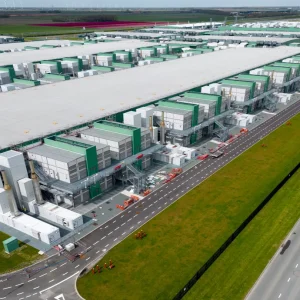
Red Hat’s enterprise containers platform, OpenShift 4, stood out among a flurry of releases at the company’s summit in Boston this week.
The refreshed platform aims to harmonise the work that goes into running applications in hybrid- and multicloud environments by providing automated installation, upgrades, and life-cycle management for every part of the container stack—the operating system, Kubernetes, and cluster services and applications.
It also now integrates tightly with Jenkins and other standard continuous integration/continuous delivery (CI/CD) tools, or OpenShift’s built-in workflows and tools, for security-focused application builds.
OpenShift 4 works across all of the major public cloud vendors such as AWS, Google Cloud Platform, Microsoft Azure and Alibaba. As Kubernetes becomes the industry standard, CIOs without a containers strategy are increasingly looking like they have nowhere to hide, although skilled specialists remain thin on the ground.
Read this: New CI/CD Foundation Draws Tech’s Big Beasts, Open Source Donations
(Software was traditionally developed to run in one computing environment, something that results in errors when this software is deployed in a different system to the one it was designed for. Essentially containerisation is a fix to this: a container is a unit of software that packages up code and all its dependencies so the application runs quickly and reliably from one computing environment to another.
The use of containers has surged as both developers and IT seek the ability to build, manage and secure applications without the fear of technology or infrastructure lock-in, as more and more applications are rebuilt to run in the cloud.)
OpenShift’s ability to push out automated updates irrespective of where a container is running results in a “a more secure, always-up-to-date platform, without the headaches of manual and serial upgrades, or downtime” the company said. The aim, as Red Hat CEO Jim Whitehurst put it: “Make open hybrid cloud the default architecture.”
Red Hat OpenShift 4: Lots Included… Risks Involved?
Also included in the release: CodeReady Workspaces, or the tools to build, deploy and debug containerised applications in a web-based environment.
Sacha Labourey, CEO of CloudBees, told Computer Business Review: “It will be interesting to see how “Kubernetes bundles”, which pack K8s with additional features do on the market in the future. Based on my discussions on the market, the appeal for Kubernetes is so real that customers want to get a “clean” Kubernetes story, which they can then extend with the best-of-breed extensions, but they are increasingly worried about “Kubernetes++” editions which might or might not be compatible with other K8s distributions, in particular those of the three top IaaS [providers].”
Last month the enterprise-ready container platform Docker fall victim to major breach and with container security an ongoing conversation point, Red Hat was keen to emphasis the work that had gone into this.  SVP of Engineering Matt Hicks stressed that one of the early things the company did with OpenShift 4 was to establish certifications around the technology.
SVP of Engineering Matt Hicks stressed that one of the early things the company did with OpenShift 4 was to establish certifications around the technology.
As he put it: “[The priority is] making sure that you understand the container software that your getting is coming from a trusted partner and you understand the chain of that delivery.”
Red Hat put Deutsche Bank forward as a case study for the use of OpenShift, among other RH offerings, saying the bank, which has 6,000 internal users across 4,000 projects on 15 unique computing environments, and more than 10,000 end users globally, has achieved its objective of increasing its operational efficiency, now running over 40 percent of its workloads on 5 percent of its total infrastructure.
“The bank is among the largest in the world and executes around 13 million payments at a value exceeding EUR 1,1 tn and clears EUR transactions worth EUR 500 bn each day. Being able to more quickly and efficiently offer flexible, on-demand and always-on services to customers is vital in a highly competitive market like global finance, and cloud-native application development methodologies like containers, microservices and DevOps are well-suited to supporting those goals.”
See also: Intel Open Sources a Kubernetes-Native Deep Learning Platform






